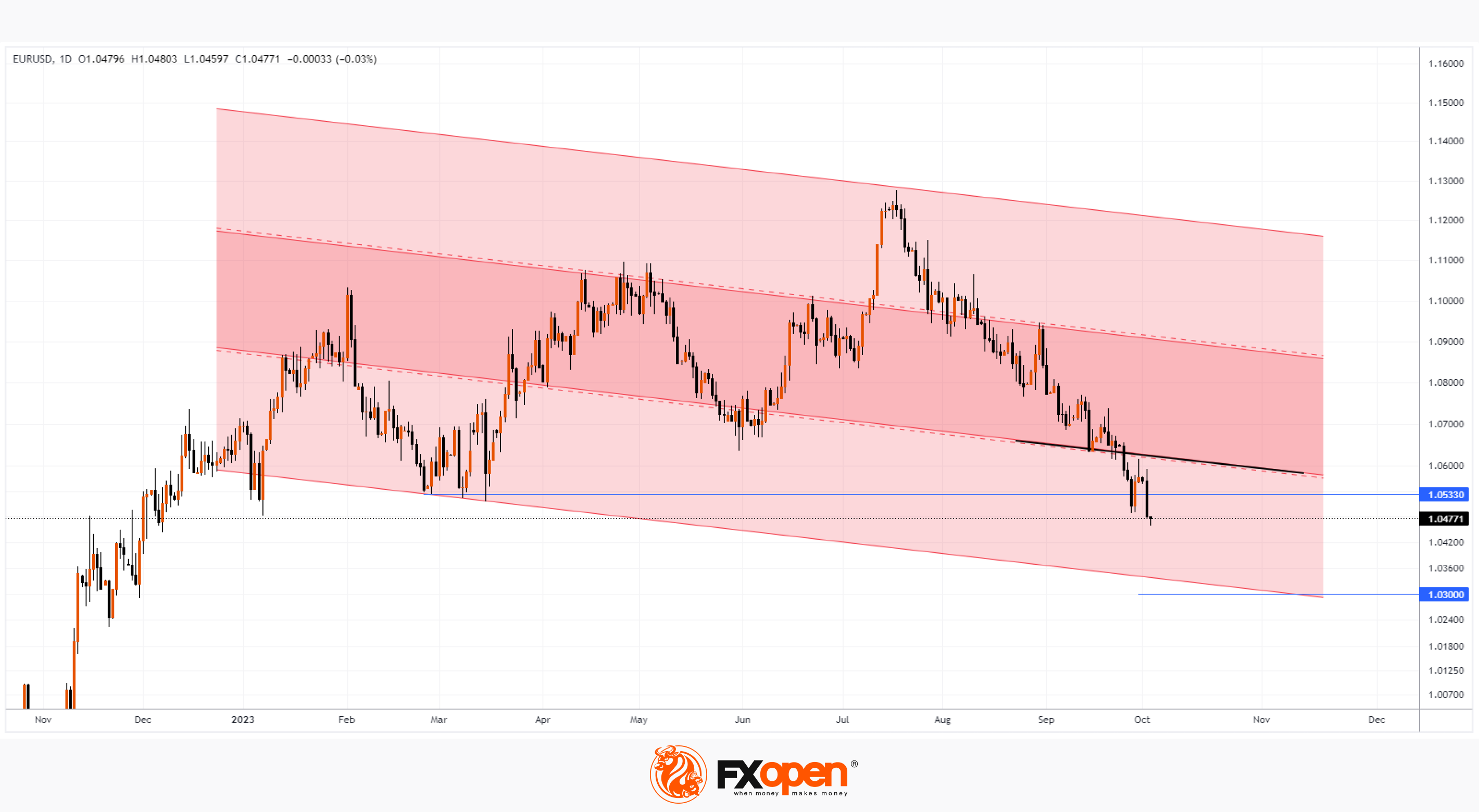FXOpen

Never in its history has the euro fallen for 11 weeks in a row against the dollar, but it happened. The minimum has been set for 2023.
The reason seems to be that in an environment where central banks are raising rates to combat inflation, the US economy appears to be favored. Yesterday's batch of news confirmed this:
→ US ISM Manufacturing PMI index turned out to be higher than expected (actual = 49.0; forecast = 47.8; previous value = 47.6).
→ In his speech at a roundtable in Pennsylvania, the Fed chairman said: “Lots of good things happen,” commenting on the strong labor market. Today, by the way, at 17:00 GMT+3 JOLTS data on the number of vacancies will be released, which can confirm the stability of the economy.
The attractiveness of USD is also affected by rising US government bond yields, as investors need dollars to buy them.
How long can the fall of the euro continue, which is already “settled” below the level of 1.05?
If the fundamental balance of power between the economies of Europe and the United States remains unchanged, the rate may reach the lower boundary of the bearish channel (shown in red).

Looking ahead to the last quarter of the year, this could mean 1.03 euros per US dollar.
At the same time, technically:
→ spikes in volatility over the past 7 days may be due to the fact that the euro dropped below spring lows around 1.0533, which led to the rebalancing of large portfolios;
→ the line shown in black may resist recovery attempts.
Trade over 50 forex markets 24 hours a day with FXOpen. Take advantage of low commissions, deep liquidity, and spreads from 0.0 pips. Open your FXOpen account now or learn more about trading forex with FXOpen.
This article represents the opinion of the Companies operating under the FXOpen brand only. It is not to be construed as an offer, solicitation, or recommendation with respect to products and services provided by the Companies operating under the FXOpen brand, nor is it to be considered financial advice.
Stay ahead of the market!
Subscribe now to our mailing list and receive the latest market news and insights delivered directly to your inbox.








